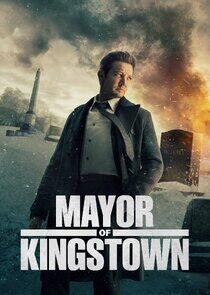The Sky at Day

The British weather is often the enemy of stargazers up and down the country. A forecast of a couple of hours of cloud cover will disappoint even the most determined of amateur astronomers. So, this month, the Sky at Night becomes the ‘Sky at Day' to provide an alternative range of spectacles to observe and activities to partake in, ideal when the nights are short, and the stars are hiding behind the clouds.
The most obvious spectacle to observe is of course our own star, the sun. A moment is needed to appreciate that whilst amateurs and scientists alike spend lifetimes and whole careers searching after distant stars in the night sky, we have a star on our celestial doorstep that we can actually send a space probe to. In 2018, that is exactly what Nasa did. The idea for the Parker Solar Probe was conceived in 1958, but it took 60 years to develop the technology to make it possible, namely, working out how to prevent it from melting.
Justin Kasper, principal investigator for the Sweap instrument (Solar Wind Electrons Alphas and Protons investigation), spoke to Chris about how the probe entered the sun's atmosphere and made incredible discoveries about its structure. It revealed that the boundary where solar material anchored to the sun first escapes and becomes the solar wind is not a smooth ball but has spikes and valleys that wrinkle the ‘Alfvén critical surface'. Previously, the coronal streamers that cause this wrinkling had been observed from a distance but never measured directly until Sweap came along. Its discoveries are altering what scientists know about the way in which the sun's atmosphere transforms into the solar wind.
Back on earth, Dr Hannah Wakeford shows us how observing the sun as it rises and sets in the sky can tell us a huge amount about the composition of our atmosphere and the weather on the horizon. The adage ‘Red sky at night, shepherd's delight. Red sky in the morning, shepherd's warning' is dismissed as many as an old wives' tale. However, due to our unique position in the mid-latitudes, it turns out that this saying may be more accurate than many think. Hannah also explores, as light travels from the sun to our eye, how different wavelengths are absorbed and scattered by the atmosphere, and the light that completes the journey to our eye or our telescope can reveal the combination of gases that make up the atmosphere. Hannah explains how this process has helped scientists to work out the composition of the atmosphere of other planets in our solar system and even exoplanets orbiting distant stars.
Exploring during the day can sometimes unlock a whole new scientific field. Guest presenter George Dransfield spoke to urban micrometeorite hunter Jon Larsen about how he accidentally discovered a micrometeorite on his garden table whilst eating strawberries on a fine summer's day, and how, ever since, he has been pioneering a method for amateurs across the globe to discover pieces of stardust in their own back garden. George tries to find some micrometeorites of her own, and in the process, learns about the huge spectrum of micrometeorites that Jon, along with his partner Jan Braly Kihle, has found and photographed in astounding detail.
As well as hunting meteorites and watching the sunset, there is also stargazing to be done during the day. Amateur astronomer and outreach hero Simon Holbeche from Bath spends every sunny weekend showing members of the public the sun in a whole new light. Using different specialist telescopes and heavy solar filters, Simon is able to show passers-by the incredible sunspots on the solar surface and the exploding prominences in the sun's atmosphere. His enduring hope is that those passers-by might become hooked by what they've seen, and one day come back to see the sky at night.
Trailer
Recently Updated Shows

The Morning Show
Nominated for three Golden Globes®, this unapologetically candid drama looks at the modern workplace through the lens of the people who help America wake up. Pull back the curtain on early morning TV.

Mayor of Kingstown
Mayor of Kingstown is set in a small Michigan town where the only industry remaining are federal, state, and private prisons, the story follows the McLusky family, the power brokers between the police, criminals, inmates, prison guards and politicians, in a city completely dependent on prisons and the prisoners they contain. It is a stark and brutal look at the business of incarceration.

The Agency: Central Intelligence
The Agency: Central Intelligence follows Martian, a covert CIA agent ordered to abandon his undercover life and return to London Station. When the love he left behind reappears, romance reignites. His career, his real identity and his mission are pitted against his heart; hurling them both into a deadly game of international intrigue and espionage.

Futurama
Futurama follows pizza guy Philip J. Fry, who reawakens in 31st century New New York after a cryonics lab accident. Now part of the Planet Express delivery crew, Fry travels to the farthest reaches of the universe with his robot buddy Bender and cyclopsian love interest Leela, discovering freaky mutants, intergalactic conspiracies and other strange stuff.
